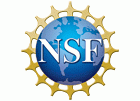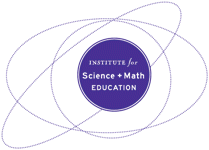How can arguing from evidence support sensemaking in elementary science?

Educators need to distinguish between arguing from evidence in science and argumentation in a colloquial sense.
District Staff should support elementary teachers to shift from disconnected activities and toward coherent investigations of phenomena that produce evidence children can use to engage in argumentation.
School Leaders & PD Providers should support teachers and students as they coordinate questions, claims, evidence, and reasoning to explain phenomena during evidence-based argumentation.
What is the Issue?
Arguing from evidence is a key scientific practice to support sensemaking in a learning community. As children collect and grapple with patterns in data to understand phenomena, differing perspectives naturally arise. Scientific communities—including PK-12 learning communities—negotiate agreement based on evidence to construct the strongest explanations about how the world works, building new knowledge together. Young children are capable of engaging in this challenging scientific practice, yet argumentation is rare in elementary school science. That needs to change in order to take educational equity seriously.
Authors:
By Megan Schrauben, Amber McCulloch, Kathy Renfrew, Carla Zembaul-Saul, Other CSSS Supporting Elementary Science Committee Members & Philip Bell | April 2021
Reflection Questions
- What is unique to argumentation in science compared to other disciplines?
- Do you have any concerns about asking your students to engage in argumentation? How can you address those issues and build on their intellectual resources?
Things To Consider
- Invite argumentation. Phenomena should evoke childrens’ interest and desire to make sense of their world. They should elicit diverse and competing initial explanations that require extended investigation, multiple sources of data, and opportunities to argue from evidence to construct more scientific explanations.
- Promote science talk. Especially in elementary grades, talk moves can facilitate a community in which children make their thinking public when they propose evidence-based claims, evaluate and critique claims, and negotiate their understanding. This can be a means of formative assessment and support responsive instruction.
- Argumentation and curriculum integration. At first glance, it might appear argumentation can serve as a vehicle to integrate science with subject areas that receive more emphasis in elementary grades, like ELA and mathematics. However, there are “rules to the game” for arguing from evidence in science that are unique to the discipline and support meaningful science learning. Scientific argumentation reflects: how scientists explore empirical research questions, what counts as evidence, and the role the community plays in building knowledge. Explore the disciplinary similarities and differences in types of argumentation with your class. For example: In science, argumentation is focused on developing causal explanations of phenomena—but argumentation in history is about the contextual, evidence-based interpretation of events from particular perspectives.
- Support sensemaking through argumentation. Claims–Evidence–Reasoning activities should be embedded in scientific practices and paired with talk moves like agree/disagree and asking for evidence.
Attending to Equity
- Arguing from evidence can be a challenging intellectual activity that is linguistically demanding. It can also be a new practice for many students. Provide children with multiple ways to express their ideas and thinking with culturally responsive custom supports.
- Establish norms and scaffold productive talk with your students’ intellectual resources in mind. Children should not be disagreeing with each other based on opinion or popularity, but rather should be collaboratively making sense of data and coordinating claims and evidence. Learning to respectfully disagree, ask for clarification, introduce counterclaims or counter-evidence, and refine existing claims requires shared norms that need to be modeled and practiced. Over time, children develop agency to engage in the practices, making decisions about what data to collect and how, anticipating rebuttals to claims, and building deeper conceptual understanding.
Recommended Actions You Can Take
- Move away from discrete hands-on activities or reading/telling about science and toward figuring out phenomena. Children need time to collect and analyze data in order to propose, critique, and refine evidence-based claims that explain phenomena. Arguing from evidence systematically and collaboratively is fundamental to this process. Nurture the curiosity children bring into elementary school by supporting them as inquirers of phenomena from the natural world.
- Review resources that show what it can look like when children engage in arguing from evidence (e.g., videos, written cases). Attend to the variety of ways in which all children make their thinking public and contribute to—and benefit from—the sensemaking process.
- Record and analyze a science lesson where your students are arguing from evidence. Consider your role and how to ensure that children are co-constructing explanations for phenomena, rather than the teacher or text doing the explaining.
ALSO SEE STEM TEACHING TOOLS
STEM Teaching Tools content copyright 2014-22 UW Institute for Science + Math Education. All rights reserved.
This site is primarily funded by the National Science Foundation (NSF) through Award #1920249 (previously through Awards #1238253 and #1854059). Opinions expressed are not those of any funding agency.
Work is licensed under a Creative Commons Attribution-ShareAlike 4.0 Unported License. Others may adapt with attribution. Funded by the National Science Foundation (NSF). Opinions expressed are not those of any funding agency.


 Email Feedback
Email Feedback


